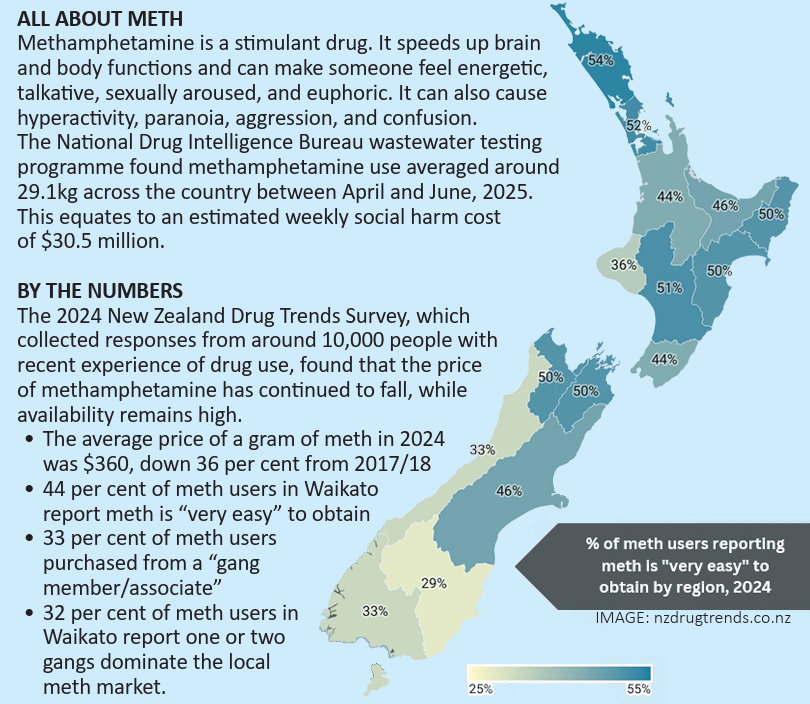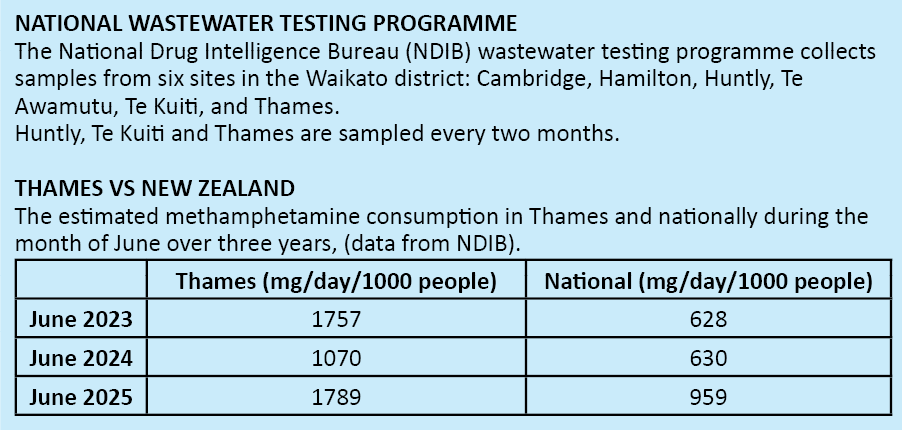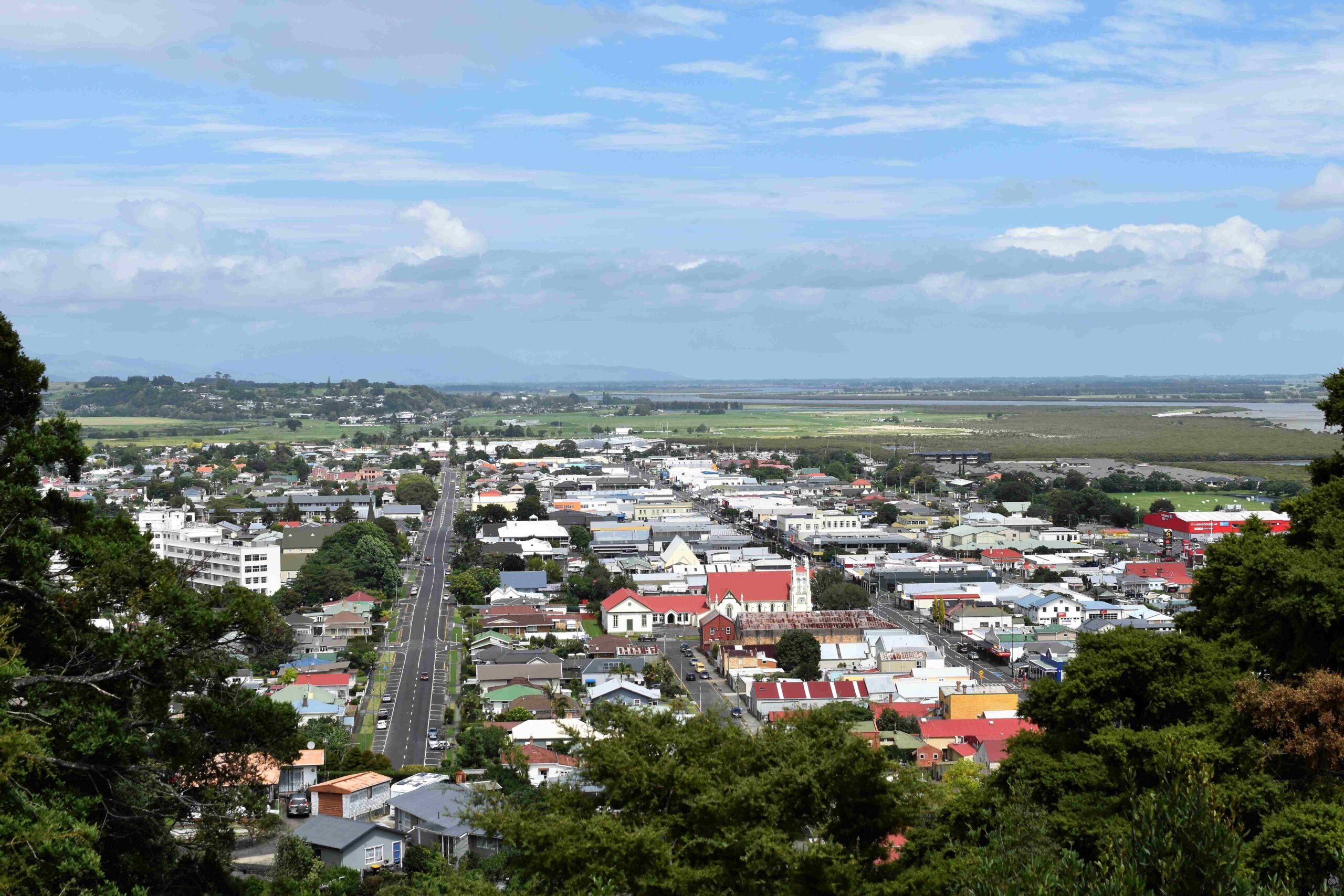People seek out drugs for complex and varied reasons. Continuing The Valley Profile’s investigation into the high methamphetamine consumption in Thames, ALICE PARMINTER speaks with drug users about how it’s affected their lives.
“I started to use meth when I was 22. The first time I did it was the first time I’d seen it. I honestly thought that it was just what the media portrayed. I literally thought it was gangsters.”
Millie* is a former methamphetamine addict. She’s not the stereotypical image of a drug user: she’s never been homeless, and with her put-together appearance she wouldn’t seem out of place at the gym or in a suburban office.
But like many other New Zealanders, Millie found her way to the pipe.
“My boyfriend at the time snuck off at three in the morning… he was passing a pipe around and there were all these other people in the room,” Millie said.
“They were all so chill and just having a good time… And I was like, F** it. Why not?”
Millie, now 35 years old, recounted how the drug found its way into every aspect of her life.
“It just turned into a rolling cycle. I was dependent on it to be intimate with somebody… I was working in childcare and I just had so much energy.”
Her wake-up call came when she attempted to drive across the Waikato while high.
“I smoked it on Thursday and I drove to Thames. And I was only wearing one contact lens,” Millie remembered.
“I pulled over and I was sitting in the car, tripping out. The trees were blowing around, and they were like, ‘come and get me’. I thought I was going to die.”
It hasn’t been an easy journey to sobriety. Millie now attends Narcotics Anonymous meetings and has been off methamphetamine for nearly two years, but admits to a few slip-ups along the way.
“My life wasn’t going downhill. But I could just see my mentality was just yuck.”
Millie’s story is not unique.
The number of methamphetamine users in the district is high.
The Profile previously reported Thames has one of the highest per capita meth consumption estimates in the country – up to double the national rate of consumption according to wastewater testing.
Many users are homeless and jobless, but many are not.
“What we see is that meth use knows no cultural or class boundary. It touches every class in this community. Homeless, homed, rich, poor, middle income,” Te Whāriki Manawāhine o Hauraki | Hauraki Women’s Refuge chief executive Denise Messiter said.
“It’s not a scourge of the poor. And I think because it cuts across all of those, it’s indiscriminate.”
Steve* grew up in a well-off family, with caring parents. His first brush with drugs came when he was 14, his mother Angela*, said.
“One of his friend’s mum… gave him marijuana,” she said.
“He made bad choices when he had these good friends… And we didn’t know.”
Eventually one of Steve’s friends committed suicide because of drugs, Angela said, which caused Steve to spiral too.
The family became aware of Steve’s methamphetamine use in his early 20s, Angela said.
“My husband came home… [Steve] was in a flat at the back of our house. He had locked the door. And he was using a pipe,” she said.
“They were difficult times. He’d go to the nightclubs. He’d get into a few fights, but never got in trouble with the police. He’s so proud of not being in trouble with the police.”
Steve now lives at home with his parents, and has been clean for 20 years. But his drug use triggered lifelong mental health issues, Angela said.
“He now works cleaning, and he loves that job. But he still finds it difficult.”

Mental health was inextricably tied up with drug use in many cases, Health New Zealand’s mental health addictions lead for Te Manawa Taki, Vicki Aitken, said.
“If you’re using methamphetamine, you’ve got a much greater chance of developing a psychotic disorder that doesn’t resolve,” she said.
“And also, if you are somebody who has had a history of trauma or lots of distress, and you are using methamphetamine and other drugs to cope with that, then you’ve got that other kind of vicious cycle of drug use and mental health problems happening.”
But social factors, like family habits, housing affordability, and rising living costs, can also drive people to begin using.
“People use it to disappear, because they’re struggling,” Te Whāriki Manawāhine o Hauraki | Hauraki Women’s Refuge director of research Paora Moyle said.
“Most of them don’t want to be addicted. They just want to have some control in their life.”
Methamphetamine was a complicated topic for Lucy*, who began using the drug in her 30s.
Tangled up in a bad relationship, she noticed a change in her then-partner almost immediately upon moving to Thames in January.
“It has fed an ego that is just – it’s turned not just narcissistic but very vindictive, [and] very calm and collected underneath it all as well, which is actually what puts me off smoking meth around him,” she said.
“I can’t say anything because it gets him angry, and then we start fighting.”
The pair ended up homeless for a time after disagreements with the family members they were living with.
“That was… an experience. Thames is probably the worst place I’ve seen in terms of the level of treachery that people will put upon other people in order to get what they want,” Lucy said.
“There’s some guys out here who I do think are grooming young girls, through meth or weed and doing weird shit….
“They can’t stop themselves from stealing because they’re thinking about the bag. And, I mean, the mess in the public toilets and that – It’s f**ing horrendous, and I feel so sorry for the people who clean it.”
Lucy, now 45, is currently on her own and has found a place to stay at a local lodging-house.
She’s using less, she said – choosing to walk away from the situations that made her uncomfortable.
“I say I’m an active user – I’m not addicted.
“I won’t steal for my habit – I prefer to wait to have money,” she said.
“Even being able to sit around people who are actively smoking in front of you and to say no – I’d just rather smoke nothing than go back out to the street.”
*Names have been changed for privacy.




